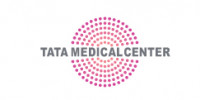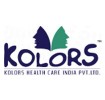Filter interviews by
Dr. D.Y.Patil Hospital & Research Centre Interview Questions and Answers
Dr. D.Y.Patil Hospital & Research Centre Interview Experiences
7 interviews found
I applied via Job Portal
(4 Questions)
- Q1. What's about yourself ?
- Ans.
I am a detail-oriented individual with strong clerical and computer skills, eager to contribute to a team-oriented work environment.
Graduated with a degree in Computer Science
Proficient in Microsoft Office Suite
Experience in data entry and record keeping
Strong organizational and time management skills
- Q2. What is your experience ?
- Ans.
I have 3 years of experience working as a Clerk and Computer Operator in a busy office setting.
Managed and organized office documents and files
Performed data entry and maintained accurate records
Assisted with administrative tasks such as scheduling appointments and answering phone calls
- Q3. What is expection?
- Ans.
An expectation is a belief about what will happen in the future or a standard of behavior that is considered acceptable.
Expectations can be related to outcomes, behaviors, or standards.
They can be realistic or unrealistic.
Expectations can influence our perceptions and reactions to situations.
Examples: Expecting a promotion after working hard, expecting someone to be on time for a meeting, expecting a certain level of c...
- Q4. Talk some our organization
Interview Preparation Tips
(1 Question)
- Q1. Basic accounting question
(1 Question)
- Q1. Introduction & regarding Salary
Interview Preparation Tips
I applied via Referral and was interviewed in Jan 2024. There were 2 interview rounds.
(4 Questions)
- Q1. About the language proficiency.
- Q2. Why do u want to do this job?
- Q3. Why did u left ur previous job?
- Q4. How much salary are you expecting for your experience?
More practical questions than theory.
Interview Preparation Tips
I applied via Referral and was interviewed before Oct 2023. There was 1 interview round.
(2 Questions)
- Q1. What your quality while working with perticular department
- Q2. How you manage the critical situation.
I appeared for an interview before Jul 2024, where I was asked the following questions.
- Q1. They just ask related your work
- Q2. Or FDA approved Question
Interview Preparation Tips
I applied via Walk-in and was interviewed before Apr 2020. There were 2 interview rounds.
Interview Questionnaire
2 Questions
- Q1. Blood Sample Testing
- Q2. Blood Collection Process
I applied via Walk-in and was interviewed before Dec 2020. There were 3 interview rounds.
Interview Questionnaire
14 Questions
- Q1. 1) Emergency drugs.
- Q2. 2) Care of unconscious patient
- Q3. 3) Steps of BLS or ACLS
- Q4. 4) Modes of Ventilator
- Q5. 5) Sites for IM injection
- Q6. 6) Universal safety precautions
- Q7. 7) Biomedical waste mgmt
- Q8. 8) Needle stick injury prophylaxis
- Q9. 9) Emergency codes in hospital
- Q10. 10) Normal values of minerals and CBC and kidney profile.
- Q11. 11) Patient safety precautions
- Q12. 12) Patients rights
- Q13. 13) Types of nosocomial Infections
- Q14. 14) Steps of handwashing and times of handrub
Interview Preparation Tips
Top trending discussions






Interview questions from similar companies

I applied via Company Website and was interviewed before Sep 2021. There were 4 interview rounds.

Questionairre prepared by the institute.
(1 Question)
- Q1. Basic nursing Procedures and their principles
(1 Question)
- Q1. All Basic parameters of a healthy person
Interview Preparation Tips
- Bed sores and it's care
- Different size of IV cannula
- Cancer
- Chemotherapy

I applied via Walk-in and was interviewed before Feb 2023. There were 2 interview rounds.
Nursing subject Knowledge is required, presence of mind and confidence is required
(5 Questions)
- Q1. Why did you Choose Tata Medical Centre, Nanda Diagnosis and Nursing Practicals.
- Q2. Tell me one Nursing Diagnosis?
- Q3. Tell the steps of Handwashing?
- Q4. Tell me 1 more Nursing Diagnosis?
- Q5. More Nursing Diagnosis please?

I appeared for an interview in Oct 2023.
(2 Questions)
- Q1. Emergency management of hypoglycemia , all codes of hospital, all bundles like CAUTI ,CLABSI etc; Back care, Alopecia, Subcutaneous injection
- Q2. Lumbar puncture position
Interview Preparation Tips
Dr. D.Y.Patil Hospital & Research Centre Interview FAQs
Tell us how to improve this page.
Dr. D.Y.Patil Hospital & Research Centre Interviews By Designations
- Dr. D.Y.Patil Hospital & Research Centre Staff Nurse Interview Questions
- Dr. D.Y.Patil Hospital & Research Centre Lab Technician Interview Questions
- Dr. D.Y.Patil Hospital & Research Centre Blood Bank Lab Technician Interview Questions
- Dr. D.Y.Patil Hospital & Research Centre Accountant Interview Questions
- Dr. D.Y.Patil Hospital & Research Centre Computer Operator and Clerk Interview Questions
Interview Questions for Popular Designations
Overall Interview Experience Rating
based on 5 interview experiences
Difficulty level
Duration
Interview Questions from Similar Companies
Dr. D.Y.Patil Hospital & Research Centre Reviews and Ratings
based on 99 reviews
Rating in categories
|
Staff Nurse
64
salaries
| ₹2 L/yr - ₹4 L/yr |
|
Lab Technician
22
salaries
| ₹1.2 L/yr - ₹3 L/yr |
|
HR Executive
6
salaries
| ₹3 L/yr - ₹4.6 L/yr |
|
Senior Pharmacist
6
salaries
| ₹2.5 L/yr - ₹3.6 L/yr |
|
Pharmacist
5
salaries
| ₹1.2 L/yr - ₹3 L/yr |

Sarvodaya Hospital

Nobel Hygiene

Moolchand Hospital

Ciron Drugs & Pharmaceuticals
- Home >
- Interviews >
- Dr. D.Y.Patil Hospital & Research Centre Interview Questions











